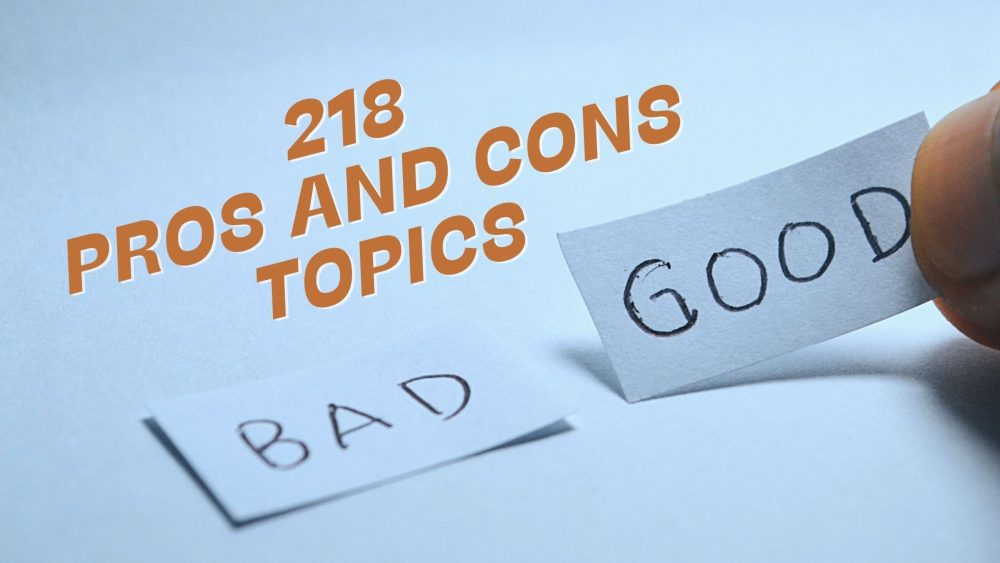Does the concept of public speaking make droplets of sweat collect on your forehead?
Would you like to impress your classmates and teachers with your fantastic knowledge on a specific subject, but you have less than average demonstration speech skills?
If so, you’re not alone.
Whether it’s for your studies or job-related, this guide highlights terrific demonstration speech ideas that you can implement without breaking a sweat.
What The Heck Is A Demonstration Speech?
Well, a demonstration speech is a speech that aims at teaching the audience something. To make a demonstration speech impactful, you should approach it from the perspective of an expert.
That will make your audience assume you have mastered the subject. Thus, they will pay attention and learn from you.
Picture it this way: students regularly hear or give demonstration speeches. These speeches are lessons that entail presenting a topic in the form of practical steps. It’s what your best professors are paid to do when they come to your classes.
Some of the how-to speech ideas you may want to teach your audience include: how to cook brown rice, how to edit a photo, or how to create an iPhone app.
Demonstrative Speech Examples
We are going to look at various demonstrative speech ideas. These ideas may vary depending on your audience, the time you have for the presentation, and your interests.
5 Minute Demonstration Speech Topics
- How to lose weight in one month
- How to choose a profession you’ll love
- How to browse the web without getting into trouble
- How to play chess like a pro
- How to master grammar in a month
- How to travel the globe on a budget
- How to study in college using substantial student loans
- How to learn interior design in three months
- How to master coding in a month
- How to prevent injuries
Easy Demonstration Speech Ideas
- How to sew a dress
- How to become a vegan
- How to change your credit card
- How to blog
- How to savor your wine
- How to calculate mortgage payment
- How to grow a tree
- How to snowboard
- How to line dance
- How to clean the car
Good Demonstration Speech Ideas
- How to train the brain
- How to bake a cake
- How to set up a blog
- How to brush teeth
- How to sell a product on eBay
- How to motivate your friends to do charity
- How to land a job interview at the New York Times
- How to trade Bitcoins (and not lose your soul)
- How to combine studies and social life (without going crazy)
- How to master typing without looking at your keyboard
Unique Demonstration Speech Ideas for College Students
- How to prepare for a wedding
- How to decorate the backyard on a budget
- How to make soap
- How to cope in a multicultural environment
- How to write a novel in six months
- How to dress smartly without spending extra money
- How to build your future career using networking
- How to brew your own beer
- How to declutter your room
- How to build an animal shelter
Tips For Choosing The Right Theme For A Speech
Obviously, you should choose a unique topic. It depends on the type of lecture you are supposed to give. It may also be based on a lesson you covered in one of the courses.
Here are tips to help you select outstanding demonstration speech topics:
1. Research Widely
Whether you know more about the theme or not, you need to research on it. Start by knowing what’s already in the public domain and narrow down to the nitty-gritty a huge percentage of your audience knows little about.
Start by making a simple Google search on the theme and take tons of notes as you interact with different resources. You may bookmark useful resources in your browser, on a private Pinterest board, or paste the links in a new Word document.
2. Keep The Audience In Mind
Check out forums like Reddit, Quora, Yahoo Answers, and other online forums. These platforms give you clues on the kind of questions your audience has. You may also create a questionnaire and share it with the audience. It’s an easy way to get to know what’s on the mind of your audience.
3. Let Your Creativity Juices Flow
After reading and watching what other experts have said about the subject, is there something they haven’t covered? You need to come up with unique ideas even if it means using writing help to find some of the least-explored demonstrative speech ideas. But before you do that, try and write your own.
4. Make A List
After conducting thorough research on the audience and resources, create a list of the first thoughts or ideas that pop in your mind. This process has no set limits. So, let your thoughts flow freely and don’t judge any ideas. Just put them down.
After creating the list, take a good, close look at those ideas. Which idea inspires you to give a powerful lecture? Make a wise choice, as this is a critical step.
5. Go For A Topic You Know Pretty Well
Sure, you should keep the audience in mind when choosing a topic, but you should also keep yourself in the equation. Which topics excite you?
When you choose demonstration speech topics that impress both you and your audience, you will make a historical presentation. Thus, go for topics you are passionate about, and you’ll capture the attention of your listeners.
How To Craft A Killer Demonstration Speech Outline
The approaches for organizing demonstration speech are as many as the demonstration speech topics themselves. However, you won’t go wrong by using the following basic speech outline:
- State your why
- Provide a brief overview of the whole process
- Explain each step
- Discuss the options, variations, or points (optional step)
- Conduct the Q&A session
- Summarize
Let’s look at each of these parts in detail.
1. State Your Why
The aim of a demonstration speech is training your audience to know how to complete a process or perform a particular task. As with any educational task, it’s important to ensure that the audience is motivated to listen to the presentation.
That’s why you may want to start by telling the audience how your speech will benefit them. Once the audience understands why they should learn the task, their motivation level will rise.
Some of the ways to state your why and thus, motivate your audience is by letting them know that the demonstration speech will help them:
- Save money
- Save their time
- Become happier
- Sleep well
- Earn a promotion
- Build a range of skills
- Experience satisfaction and enjoyment
- Earn more money
- Become more effective in an activity
- Achieve their goals
There are several ways to motivate the audience, but one of the most effective ones is to start with a story. Narrate an interesting story describing how new knowledge will improve their lives.
2. Provide A Brief Overview Of The Whole Process
Before diving deep into the details of your topic, you should give an overview of the process or task. This step is important in the following ways:
Providing a high-level overview of the entire process or steps gives your audience a mental framework on which they can hook the details you intend to share later in your speech.
At the onset of learning something new, part of the audience may fear that it’s complex. Presenting an early overview convinces your audience that the subject isn’t complicated. For example, “We’ll learn how to apply for a visa in five easy steps…..”
Presenting the outline earlier helps your audience to picture how the steps will build into something bigger later on. It gives the audience the context of your presentation.
The most recommended way of presenting an overview is to use a diagram that illustrates the steps of your subject matter. You will use this diagram as a reference point throughout your presentation.
In addition to the overview, you should also mention the things that someone needs for the task along with the assumptions you’re making, if any.
3. Explain Each Step
From the perspective of a speaker, an interesting part of demonstration speeches is that the outline guides you. You only need to go through a task’s steps sequentially.
From time to time, you can choose to go through the steps in a different way. But when you do this, remember to alert the audience that you’re going against a convention.
Remember to keep your steps simple. Cover the most important steps that will guide your listeners accordingly from start to end.
While there’s no recommended number of steps to stick to, you should keep the steps as few as possible. For example, don’t present a process in 20 steps unless the goal is to create confusion.
Handle optional steps (such as the Q&A) later in the presentation.
For every step, remember to explain:
- Why the step is necessary (the purpose)
- What should be done (explain what the step involves in a straightforward language)
- How it should be done (show how someone can go about it)
4. Discuss The Options, Variations, Or Points (Optional Step)
After demonstrating the process or task to your audience from start to finish, it’s time to provide extra variations or points.
For instance, if the demonstration speech topic is on how to bake a cake, begin with the basic method first. Once you’re done, you may now talk about alternative ingredients, other flavors to try, and additional ways to improve the basic recipe.
5. Conduct The Q&A Session
Most speeches often wind up by taking questions from the attendees and responding to them. A Q&A session is ideal for your demonstration speech, as it allows people to seek further clarification on anything they didn’t understand during the main presentation.
Depending on the forum you are presenting in and the topic, you can decide to take questions toward the end, or you may allow people to ask questions in the middle of your speech. Either way, keep time.
6. Summarize
Ultimately, you should give a brief summary and recap the main benefits your audience will get by following the task or process.
3 Easy Ways To Crank Up The Quality Of Your Demonstration Speech
After creating an outline for your speech, you can improve the quality of your content in the following ways:
1. Incorporate Visual Aids
You can improve your demonstration speech by using suitable visuals to accompany the verbal instructions and descriptions.
Here are the options:
Use your body as a visual – If you are presenting on visual aid speech topics, such as throwing a ball, your body is the most crucial visual. You can easily demonstrate every step and “animate” most of the process.
Use diagrams and photos – You can use diagrams and photos to explain some of the steps. Visuals are more effective than text, and the study shows the brain processes visual information 60,000 faster than text.
Use physical props – Props are of two types: real and models. What’s the difference between these two? Real props entail the actual objects used to carry out a task. Models, on the other hand, include fake forms of a real object and scaled-down forms.
Whichever visuals you decide to use, ensure that the audience can clearly see them. If the visual is too tiny or obscured, then they won’t understand the presentation effectively.
2. Involve The Audience
Audience participation is another essential element. But it’s dependent on the duration of the presentation, the availability of resources to be shared by your audience, and the setting.
If these three factors favor you, then you can engage your audience. Let them perform most of the steps, and they will never forget it. If the situation doesn’t allow you to involve everyone, then ask one or a few members of your audience to volunteer.
3. Use Follow-Up Resources
Often, it’s not possible for the audience to grasp everything from a single presentation, especially a short one.
To ensure that the audience will effectively practice what you taught them, provide some resources that they may use after the session. Examples of such resources are:
- Books, websites, pamphlets, and other resources that they can use to gain a deeper understanding and learning.
- Handouts made by you that provide a summary of the steps along with photos and diagrams to help illustrate important details.
- Contact information to help your audience ask any questions later on.
That’s the nuts and bolts of it. Coming up with strong demonstration speech ideas may not be easy at first. But with time and practice, it will be easy as pie.
Find it hard to cope with your college paper? Great news! Use promo
“mypaper20” and enjoy 20% discount on a speech writing assignment from our profs!


















